05 Apr How to Get Your Brand Message Right & Wrong in Times of Crisis via @theshelleywalsh
Right now, we’re living through unprecedented times that will be written in history and studied for years to come.
If I stop and think about it, my mind struggles to process and comprehend what is going on.
Entering enforced isolation throughout the world has impacted almost every business and the economy on a global scale.
This will change society, business, and the world forever.
For brands trying to market themselves during this crisis there are two possible approaches:
- Pivot quickly and try their best to react (fight).
- Do nothing and carrying on as before (flight).
In some circumstances, it might be best to do nothing but mostly, trying to ignore the current situation is likely to alienate your audience and project a negative message that your audience will not forget.
Smart and agile businesses are pivoting:
- Local restaurants offering home delivery meals.
- Time Out becoming Time In and moving to a digital format covering online streaming listings.
- Hotel chains offering their now-empty rooms for hospital use.
- Burger King promoting a “quarantine Whopper” you can make at home.
If we look back to advertising during World War II, many brand products were no longer available for sale to civilians.
But, some brands realized that by keeping their brand name circulating, after the war ended they would be in a strong position to resume “business as normal.” See what Burger King did there.
Filmo Cameras ran ads telling the story about their cameras were being used by the troops – and that was why they couldn’t sell cameras to the public – but “their post-war products would be well worth the wait.”
General Tires ran ads that highlighted their audience to the current ‘tire crisis’ and asked them to preserve their current tires and repair them. ‘Buy more war bonds’ not tires was the message.
Neither brand was selling, but both brands were keeping engagement and brand name recollection.
You can see both of the original adverts here.
Right now, brands need to quickly reassess their content marketing strategy and make sure they are sending out the right message.
- Directly address what is happening and how this is affecting your demographic.
- Get to the heart of what your audience is feeling right now.
- What value can you offer to your audience that helps them.
If as a brand you’re thinking of doing anything PR-based, be warned that false altruism will backfire and could send a message that you are trying to profit from a crisis.
Be genuine with your messaging and actions. Don’t try to capitalize – try to help.
Most importantly, don’t stop your marketing right now. Brands should be preparing now for when we come out of the crisis and producing a strategy for that.
Continue marketing now in a considered and appropriate way and then you’re ready to dial-up and go as soon as life begins to resume again.
Over the last few weeks, I’ve been tracking the messages in my inbox from a selection of email newsletters that I’m subscribed to measure their brand messages. And, it’s been an interesting collection.
Brands Getting Their Message Right in the Crisis
Evans Cycles
Evans quickly sent out some great content that directly addressed the need cyclists would have to keep their bikes on the road.
For many right now, cycling is an essential part of their permitted exercise and many essential workers are taking to cycling commutes to avoid public transport.
I was impressed with how quickly this came out and how it really understood what their audience needed.


Although, I was disappointed that a few days later Evans followed up with this mountain bike based email.
The main image was very misplaced as it promotes a message of going into the countryside to ride.
Right now, in the UK there’s been a huge issue with people driving miles to the countryside for their “permitted exercise” and the police are now clamping down on this.
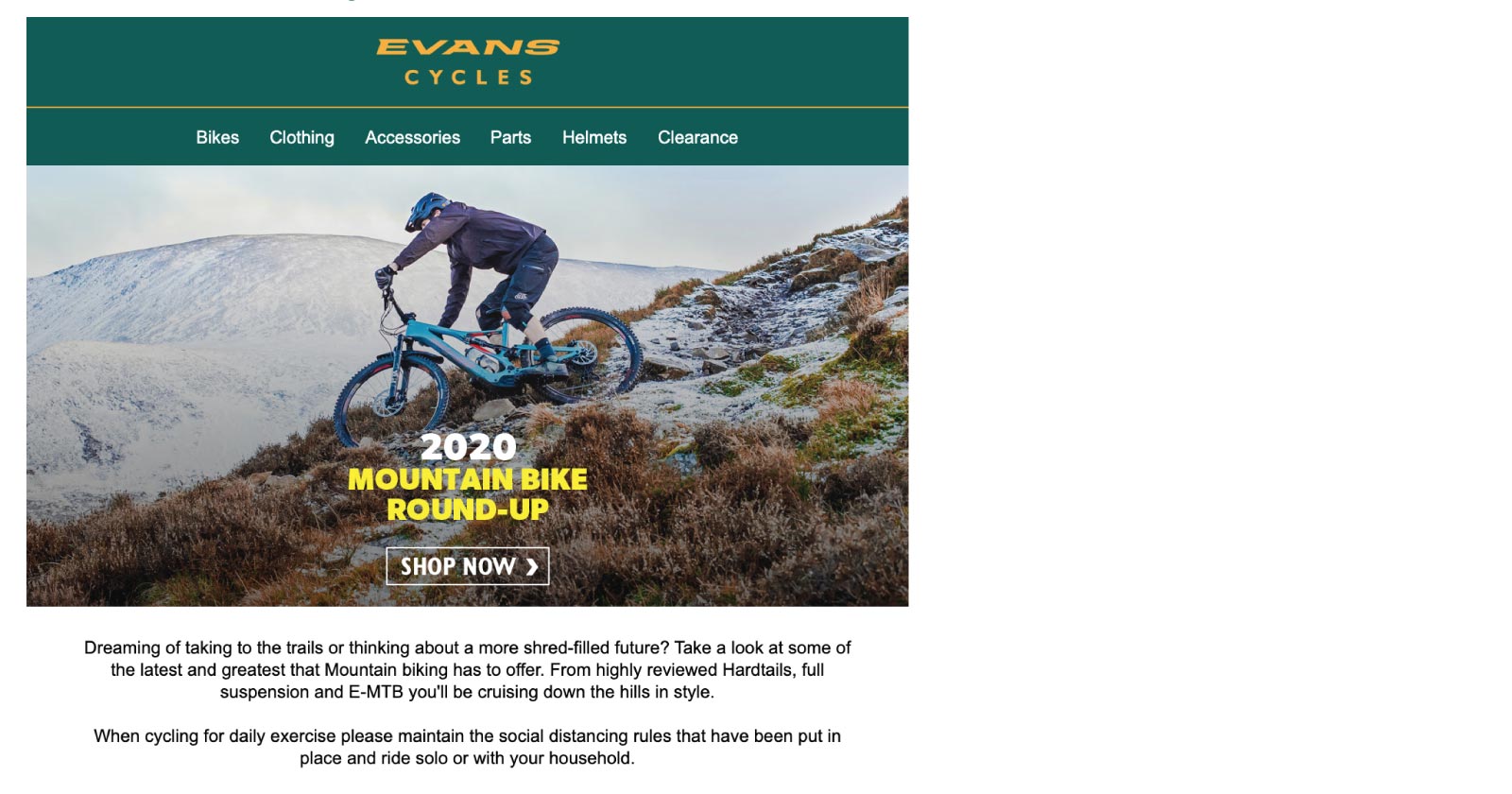

Speedo
My favorite message so far has been from swimming brand Speedo.
As a regular swimmer myself, I recognize that swimming is an important part of keeping physically healthy but it also helps me deal with stress and problems.
Swimming is a huge part of my life and during a crisis that’s when I would need it the most to keep me sane. So the one thing I miss more than anything right now is the pool.


Speedo nailed the message by really understanding what’s at the heart of their audience. They offer messages of support and inspiration across social media to keep people going.
They also acknowledge how many professional athletes will be struggling to continue with their training and the impact this could have on a career with such a short window.
What I would like to see from Speedo are articles and images of how athletes are coping with adapting their routines so let’s hope that’s coming.
A few days after the first message Speedo followed up with 5 dry land exercises to give you more power in the pool.
Again, really on target message of understanding that swimmers want to retain their fitness levels so that when they can get back in the pool they will not be starting from zero.
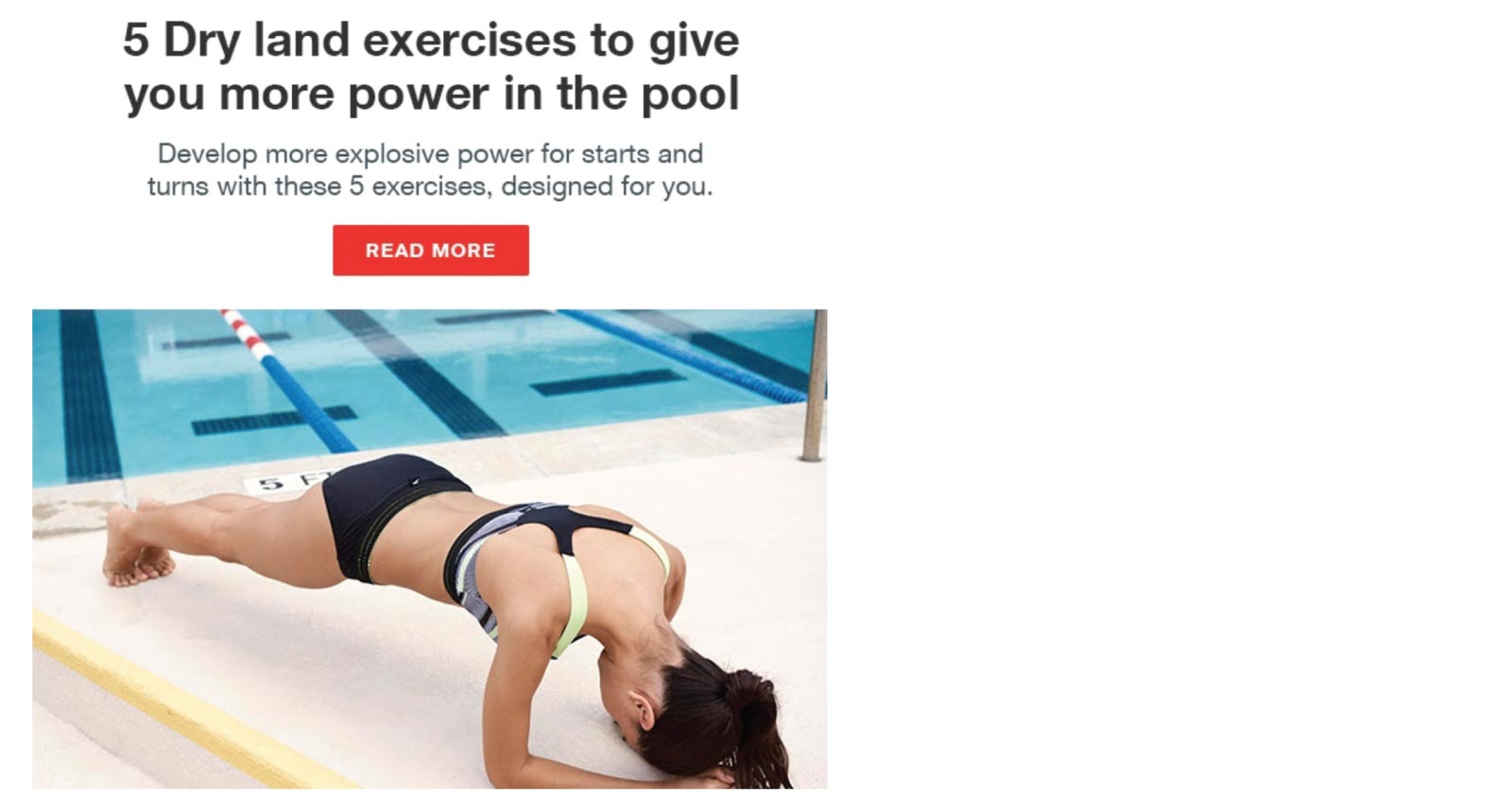

Great pivot of content and genuine messaging that found the right level.
The White Company
Luxury interiors and clothing company The White Company managed to broach the current crisis but avoided any direct reference to it.


The word “hibernation” I don’t feel reflects the current situation but they have clearly wanted to try and smooth the edges of a stressful situation.
The content they offer is very much on target and recognizes that people will want to “nest” and find some comfort during so much stress.
They also recognize their key demographic have young children and try to help with a situation that must be a nightmare for parents.


The newsletter manages to connect their products to the subjects in a fluid way. Although, I feel they could have fewer products in the email and more sentiment.
Overall, it hits a reasonable balance and is far better than most ecommerce newsletters I’ve seen.
Sweaty Betty
The boutique sports clothing company has focused on happiness and motivation as a theme for their first newsletter that came out after the lockdown. And, it really works.


They focus on five simple things that can be done to take a quick break and to maintain sanity and calm such as cooking, meditating, and reading with each tip linking to a full article onsite.
I found this one of the best newsletters with genuinely helpful tips.
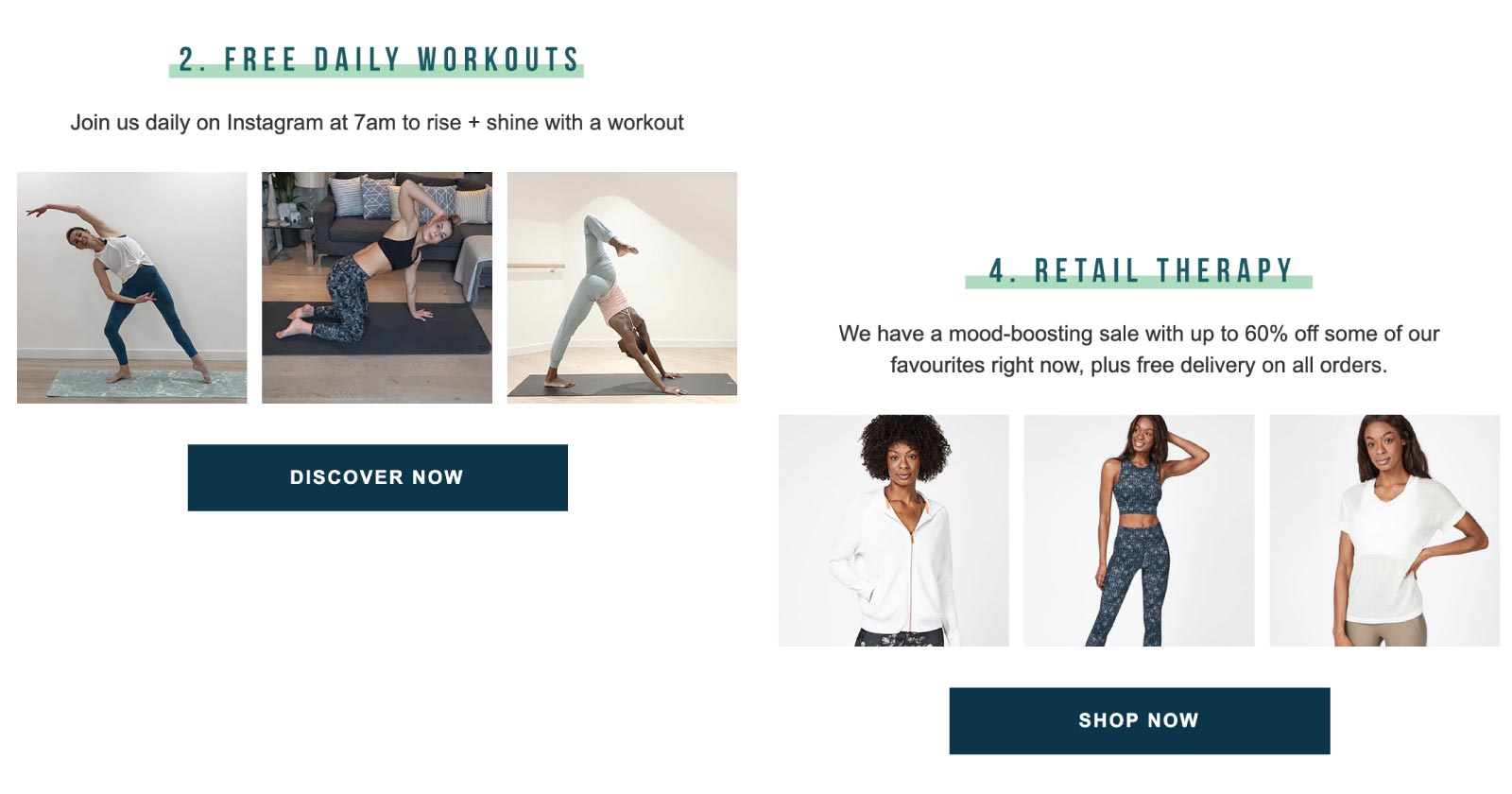

In absence of having a live workout streaming set-up in place, Sweaty Betty has linked to their Instagram account instead to push out quick bites of regular content.
The feed has a range of tips like holding your baby instead of weights to do lunges and squats! And a range of daily challenges such as how many squats can you do in a minute.
Setting up live-streamed workouts quickly is a huge challenge without existing infrastructure and it’s good to see that they have tried to address what their audience wants and needs on some level.
At the end of the newsletter, Sweaty Betty offers a “retail therapy” discount of 60% off many items.
This feels subtly baked into the mix and avoids being an overt push to sell products in the same way that the White Company does.
The tone of voice, presentation and full mix of content is a great offering from the sports brand and they really stood out against a deluge of bland emails that failed to connect to me
Brands Getting Their Message Wrong in the Crisis
Massimo Dutti
Most brands will plan their editorial and content calendars long in advance. Especially fashion, with long lead times for range planning, production, and photoshoots.
Most brands right now will have invested massive budgets into campaigns to launch their new season products. But, that is no excuse to continue pursuing a sunk cost fallacy route.
I was genuinely stunned to see the email from Massimo Dutti that has a travel theme. And this was sent after the UK went into enforced lockdown.
Possibly the worst timing to show people travel content.
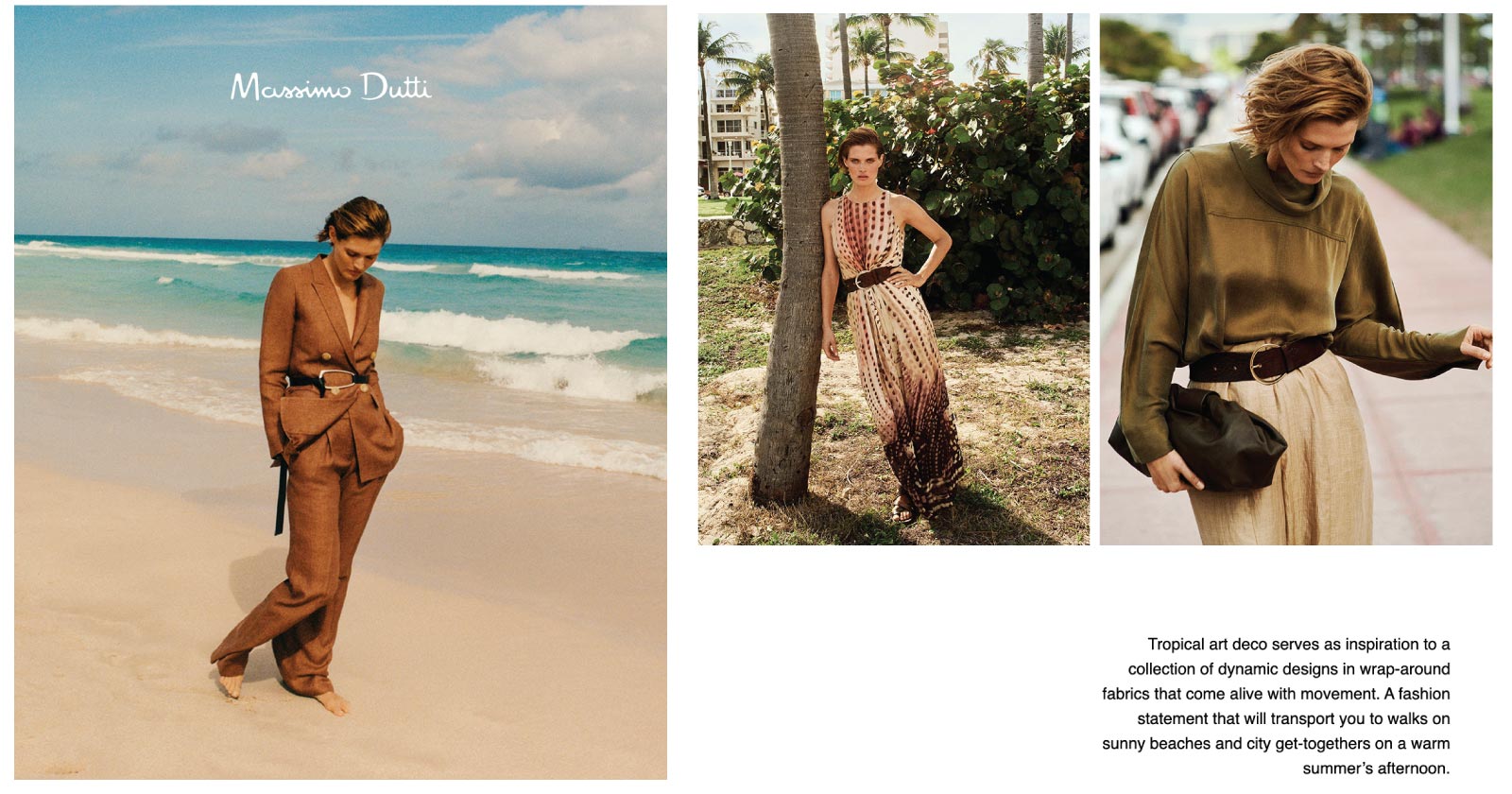

With a message of walks on sunny beaches and city get-togethers and models in summer clothes on beaches and leaning against palm trees.
No recognition that many people have lost considerable amounts of money on booked holidays that they can’t refund.
No consideration for billions of people trapped in their homes with no prospect of a summer holiday this year.
No acknowledgment of the current crisis at all.
Massimo Dutti should quickly and seriously consider what they are doing with their content strategy and do something – anything – to try and make up for their total ignorance.


Sadly, it wasn’t just one email that got through the net but a continuing series in the same theme over the last few weeks.
Massimo Dutti really should do better.
Páramo & Cotswolds Outdoors
Both of the outdoor clothing brands have ignored the pandemic and opted for a lazy email approach.
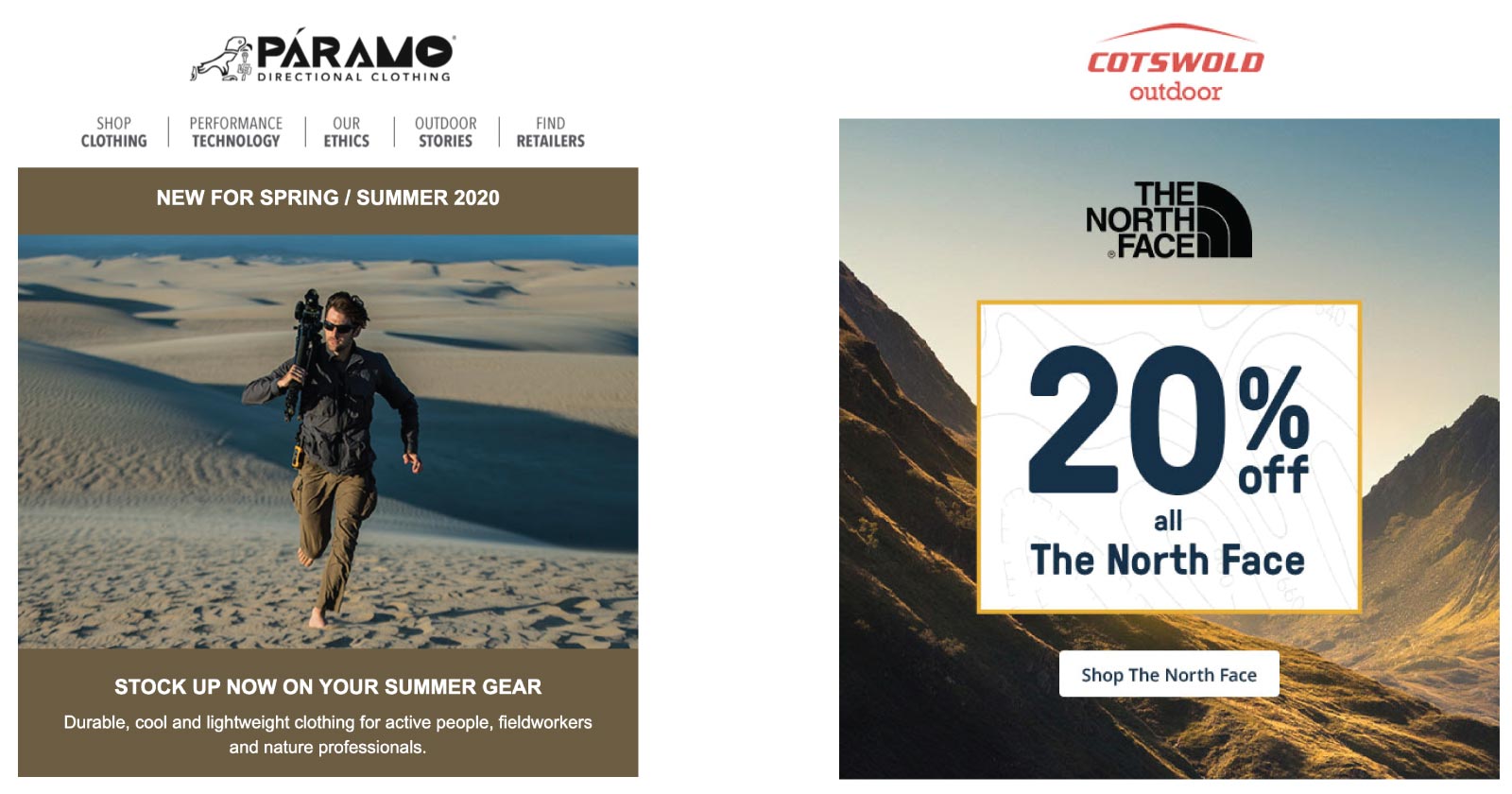

Cotswolds offering big discounts on clothing. Páramo promoting new spring/summer clothing that no one can use as they’re trapped indoors.
Both bands could be tackling content based around what exercising you can do safely under current legislation.
Or, how people used to hill climbing and trekking could keep fit at home.
Even curating existing YouTube content of walks over peaks and trails for people to stream at home for background wallpaper on their TV.
But they have taken a lazy no content strategy approach.
Big fails for both. Missed opportunities to keep their audience connected and loyal.
FatFace
The clothing brand has missed the mark with a confusing message that seems to be jumping on a trend without really understanding what people need right now.
Tips about working from home in the current crisis get lost combined with oversized images of fresh smiley models wearing jumpers they want to sell.
The tone of voice is ‘perky’ but feels completely out of step with circumstances.
Sweaty Betty has an upbeat tone of voice that works, but FatFace just feels devoid of any real personality.
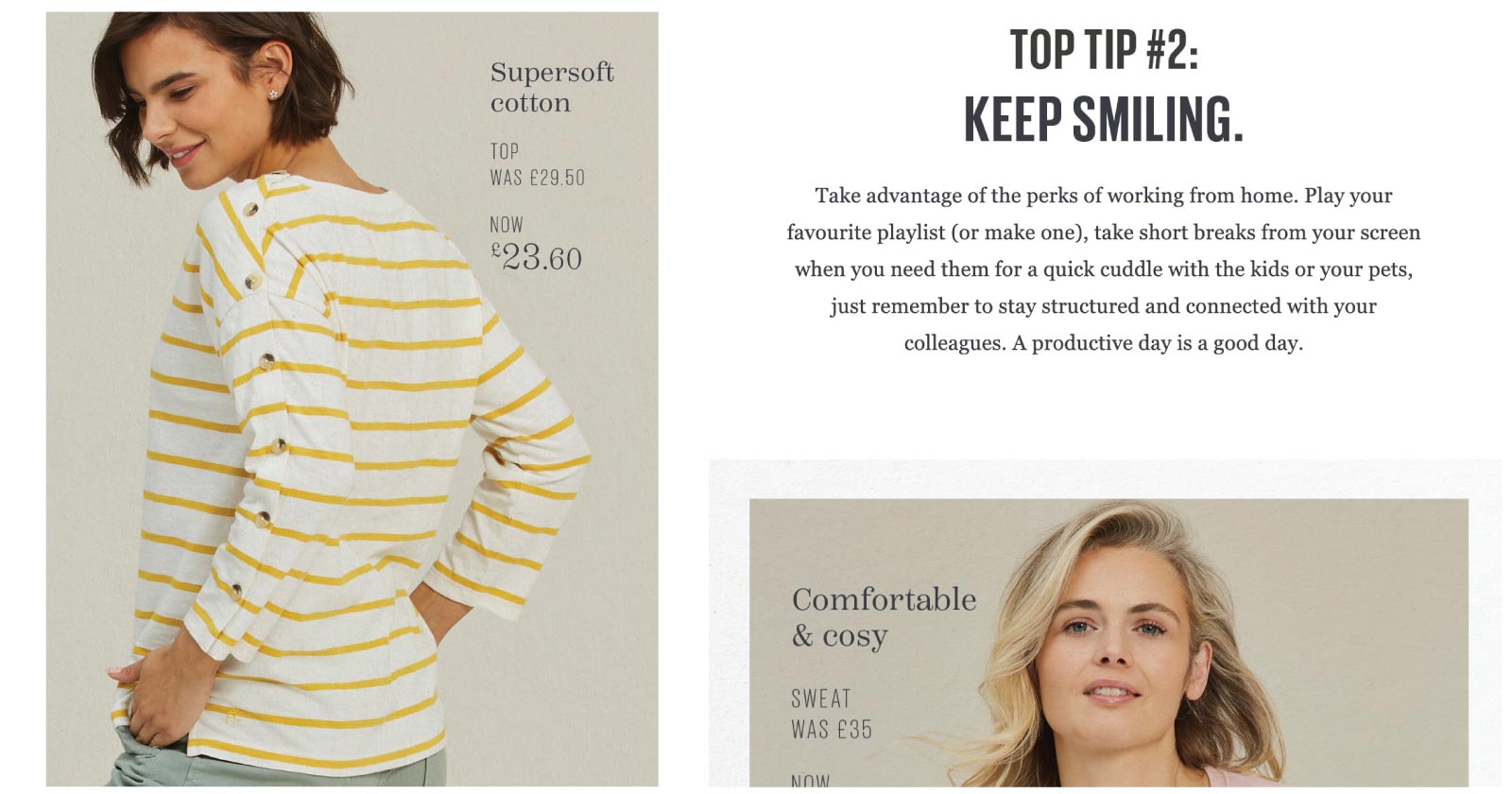

A subsequent email was titled “pick-ups-to-make-you-smile”, but is, again, an email of products for sale with no reference to the pandemic.
It just looks like a brand who only cares about selling their stock.
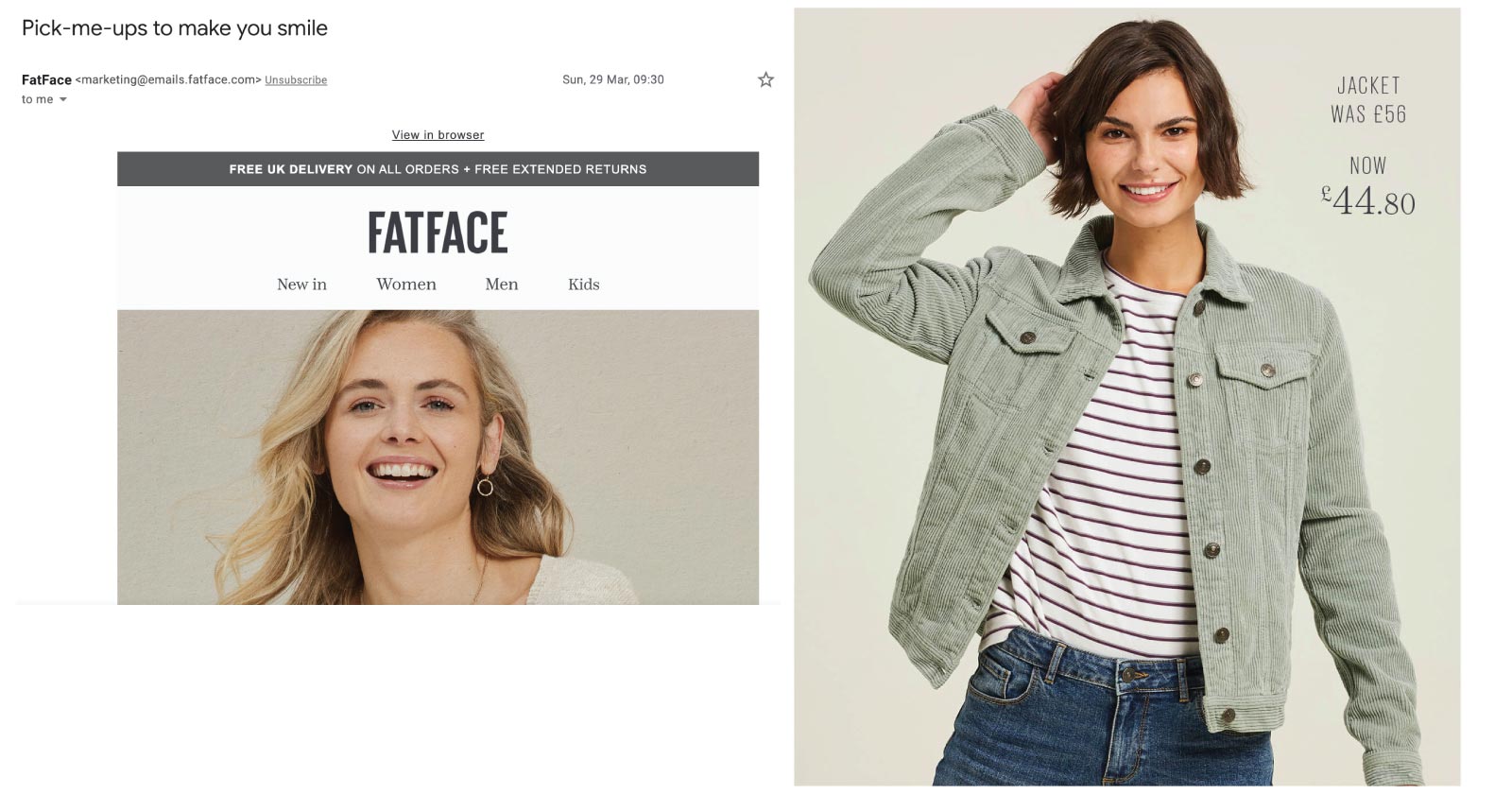

A prime example of how saying nothing is not good advice.
If I was running a brand newsletter, I would be sending emails with a message thread that picked up from each subsequent email to keep a flow of contact.
Each email would acknowledge we’re in unusual times and address the shifting “new normal.”
In the end, I would include subtle links to products but primarily, I would be maintaining engagement with my audience and addressing what they care about right now (not that I have a warehouse full of stuff I need to sell).
How to Broadcast in a Pandemic
The best advice I can give is to not ignore what’s happening and to pivot your business in any way that can to adapt to the new normal.
Brands that continue to send out emails and adverts with their pre-COVID-19 message are risking alienating their audience.
To move into a strong position for coming out of the other side of this current crisis a brand must get its message right and it must be investing in the content strategy now.
Brands should be acknowledging what is going on and most importantly what their audience is experiencing. Which is mostly fear, major discomfort and huge life change.
For the best content strategy in a crisis:
- Directly address what is happening and how this is affecting your demographic.
- Get to the heart of what your audience is feeling right now.
- Identify what value you can offer to your audience that helps them without looking like thinly veiled publicity.
More Resources:
- 12 Ways to Adapt Your Marketing Strategy in Times of Forced Isolation
- SEO After COVID-19: 8 Opportunities to Start Working on Now
- 4 Ways You Can Create a More Memorable & Appealing Brand
Image Credits
All screenshots taken by author, April 2020
Sorry, the comment form is closed at this time.